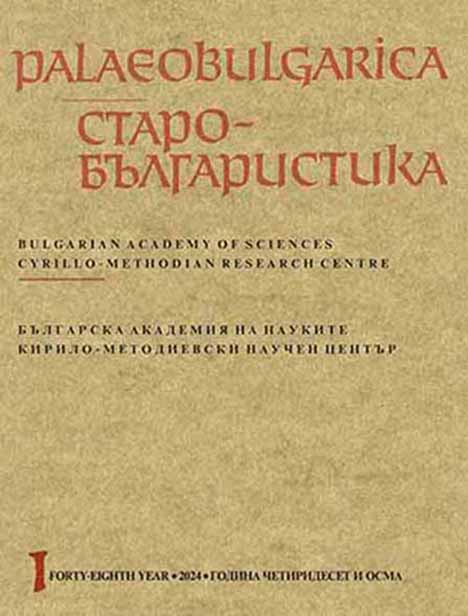Древнеболгарские и древнерусские экстратексты в Словах Григория Богослова XI в.
Old Bulgarian and Old Russian Extratexts in the Sermons of Gregory the Theologian of the 11th Century
Author(s): Vadim B. KryskoSubject(s): Language studies, Language and Literature Studies
Published by: Кирило-Методиевски научен център при Българска академия на науките
Keywords: The Sermons of Gregory the Theologian; Old Bulgarian translation; Old Russian copy of the 11th century; marginalia; translated scholia; glosses of Old Bulgarian commentators; linguistic features.
Summary/Abstract: The oldest Slavic copy of the Sermons by Gregory the Theologian – an extensive Old Russian (Old East Slavonic) manuscript of the 11th century (Q) – has great scientific value not only because it preserves the Old Bulgarian translation of one of the most important works of early Byzantine homiletics, but also due to the numerous marginalia that are presented on more than 60 pages of the codex. These marginalia are far from homogeneous in their origin. The oldest layer of additions to the text is represented by the Byzantine scholia, which were obviously present in the Old Bulgarian translation of the Sermons and were reproduced from manuscript to manuscript up to Q, where they were copied by the scribe from his antigraph along with the main text of the Sermons. During the existence of the monument on the Bulgarian territory, scribes, interpreting incomprehensible Byzantine realities and difficult or unsuccessful expressions of the translation, supplied the text with new comments, not only translated (drawn from parallel translations of the same passages), but also original ones, which are the product of their own reflection. In turn, the East Slavonic editor, who checked Q not only with its Cyrillic antigraph, but also with a Glagolitic manuscript containing these glosses, transferred them to the margins of our codex; frequent South Slavonic linguistic and orthographic peculiarities serve as a sign of their Bulgarian origin, and the examples of living Old Russian pronunciation are a sign of the “Russification”. Finally, the East Slavonic editor himself responded directly to the manuscript Q, and his responses are both of an aesthetic and a linguistic nature: remarks about the appearance of the rewritten text, about incorrect word separation and word hyphenation, the interpretations of unclear and ambivalent expressions. The significant proximity of the Old Bulgarian and Old Russian languages of the 11th century in some cases causes the uncertainty of the linguistic characteristics of the attributions. In general, there is no doubt that the marginalia of Q, reflecting the original work of the Old Bulgarian and Old Russian scribes, are an important source on Bulgarian and East Slavonic language history.
Journal: PALAEOBULGARICA / СТАРОБЪЛГАРИСТИКА
- Issue Year: 2024
- Issue No: 1
- Page Range: 67-102
- Page Count: 36
- Language: Russian
- Content File-PDF

